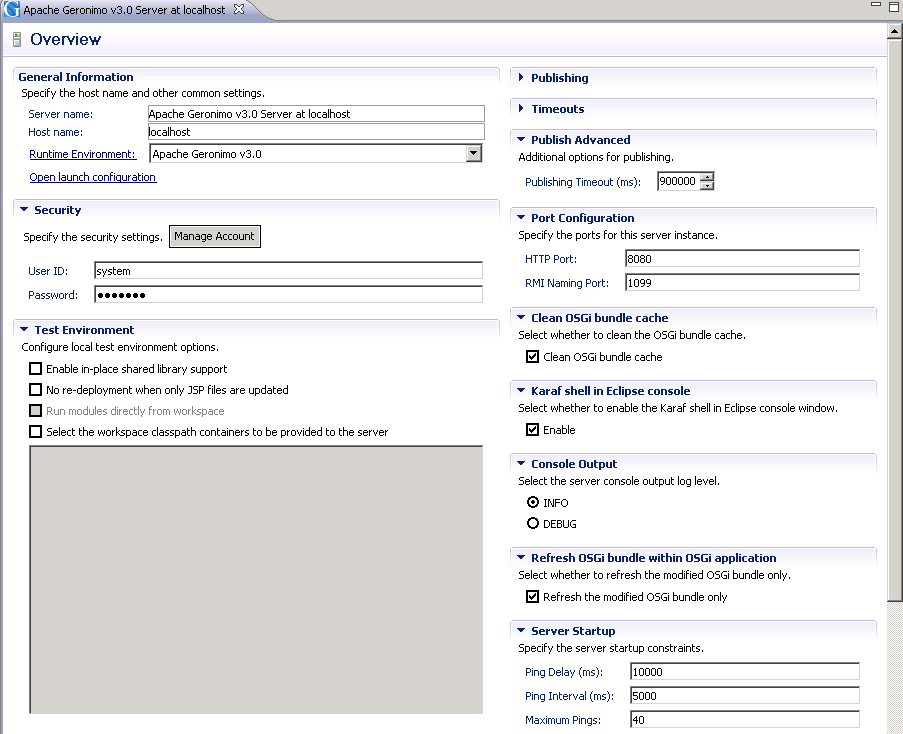This page describes various options to configure your development environment.
Editing a server configuration
In order to edit the configuration of a server, double click on server in the Servers view to open the overview of the server as shown below.

- General Information
Edit the fields in this section to change the name of the server or to associate the Geronimo Server with a different Apache Geronimo server Runtime,or to change the hostname with which the Geronimo Server is associated. - Security
The default User ID is system with a password manager. If your server installation uses a different set of credentials defined in the .propeties file realm geronimo-admin, change these two fields accordingly. The credentials specified in these two fields are used to detect server status and deployment/undeployment of applications. You may click Manage Account to administer users on local server such as changing password of default user system, adding a new user into admin group and deleting an existing user. - Test Environment
Select options in this section to change the default configurations for local test environment. See Quick Debugging JSPs of your application for more information about the JSP redeployment option. - Publishing
All servers use the default publishing settings. The server can be configured to not publish automatically by selecting the Never publish automatically option. The publishing interval (15 seconds) can be changed by providing a new Publishing interval. - Timeouts
Edit the Start and Stop timeouts to change the time limit for completing these operations. - Publish Advanced
This field specifies the time limit for publishing. - Port Configuration
The default HTTP and RMI ports are 8080 and 1099 respectively. If your server installation uses a different HTTP and/or RMI port, edit these values accordingly. Altering the values here does not change the corresponding ports in the associated Geronimo Server Runtime. - Clean OSGi bundle cache
Select whether to clean the OSGi bundle cache when the server starts up. - Karaf shell in Eclipse console
Select whether to enable the Karaf shell in Eclipse console window when the server starts up. - Console Output
The default server console output log level is INFO. If you want to enable debug output to console, select DEBUG. - Refresh OSGi bundle within OSGi application
Select whether to refresh the modified OSGi bundle only. If you want to refresh the modified bundle instead of the whole application, make sure this options is selected. - Server Startup
The settings under this section control the ping thread that polls to the server to detect the server status when the server is started from within eclipse.
- Ping delay specifies the time the ping thread will wait before polling the server.
- Ping interval controls the time between successive pings. In case of a remote server, Ping interval controls the time between successive pings to update the server status.
- Maximum Pings is the number of times the ping thread will poll the server to detect a successful startup. If the server startup can not be confirmed, the ping thread will stop the server.
Other Configurations

